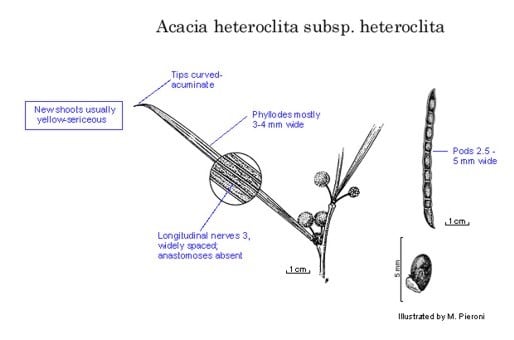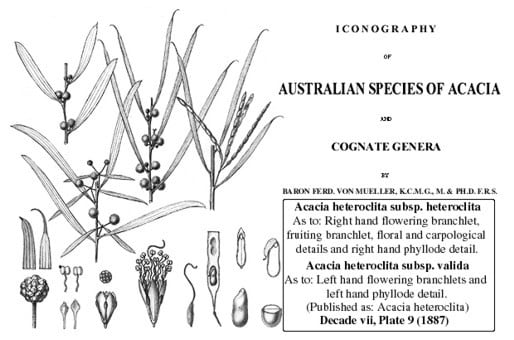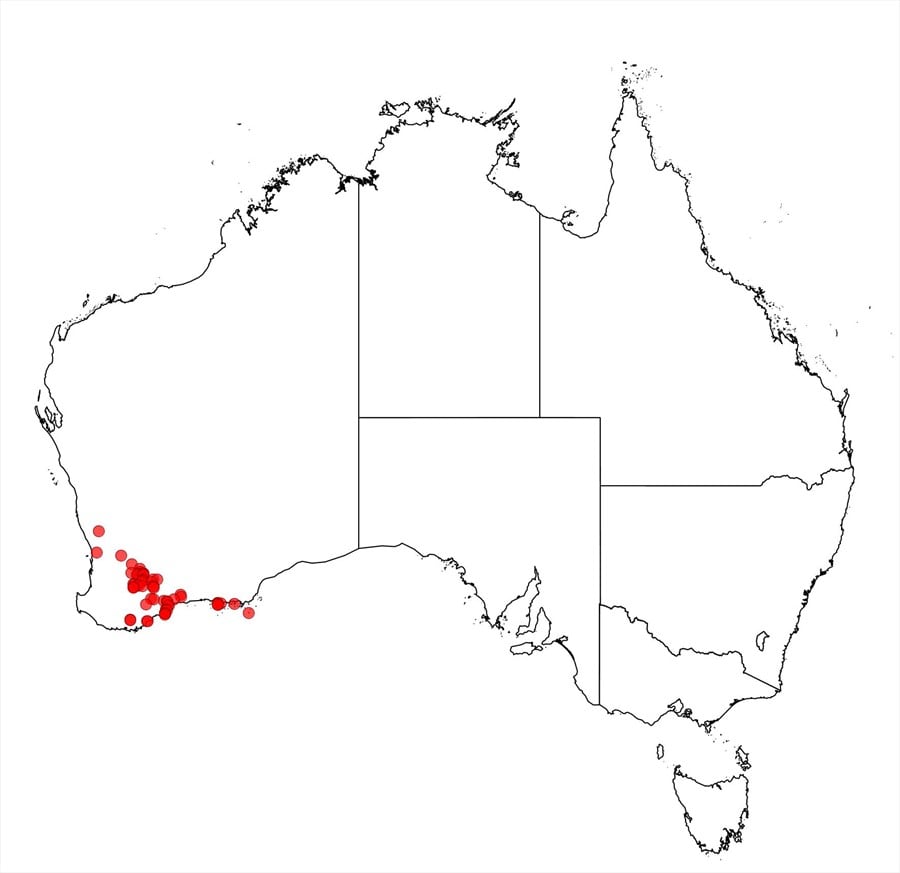Acacia heteroclita Meisn. subsp. heteroclita
WATTLE
Acacias of Australia
Family
Fabaceae
Distribution
Discontinuous from Kulin S to Fitzgerald R. Natl Park and E to Cape Le Grand Natl Park (including nearby islands of Recherche Archipelago), south-western W.A.
Description
Phyllodes (3–) 5–11 cm long, (2–) 3–4 (–6) mm wide, linear to linear-oblanceolate, with no anastomoses. Flower-heads 4–5 mm diam., 25–41-flowered. Pods to 5.5 cm long, 2.5–5 mm wide. Seeds elliptic-oblong, 2.5–3.5 mm long; pleurogram U-shaped; areole small.
Habitat
In shrubland, mallee or in heath, in white to brown sand, sandy loam or gravelly clay sand, often in saline areas and/or at edge of granite outcrops.
Specimens
W.A.: North Twin Peak Is., Recherche Archipelago, M.I.H.Brooker 3682 (PERTH); Swan R., J.Drummond 5:8 (BM, G, K, NSW, OXF, P, PERTH); c. 1 km from Kulin towards Yealering, B.R.Maslin 3835 (BRI, K, MO, PERTH).
Notes
A variant from the Kulin area (e.g. B.R.Maslin 3838, AD, G, NSW, PERTH) has unusual phyllode venation in that one or other or both the lateral nerves fail to develop or are not evident. Plants in coastal habitats at Bremer Bay and on islands of the Recherche Archipelago tend to have slightly shorter than normal phyllodes (3–7 cm long) which may reach 6 mm wide. Furthermore, their new growth is sometimes silvery instead of the characteristic golden-sericeous (e.g. K.Newbey 4276, PERTH).
The typical subspecies and A. triptycha are very similar in appearance; both have flat, 3-nerved phyllodes and very similar flowers and fruits, but the phyllodes of A. triptycha are generally narrower. Also allied to the more northern A. trinalis.
Some duplicates of the Drummond collection cited above are numbered ‘4:8’ but this number is properly assigned to Acacia nodiflora.
FOA Reference
Data derived from Flora of Australia Volumes 11A (2001), 11B (2001) and 12 (1998), products of ABRS, ©Commonwealth of Australia
Author
R.S.Cowan
This identification key and fact sheets are available as a mobile application:
URL: https://apps.lucidcentral.org/wattle/
© Copyright 2018. All rights reserved.









